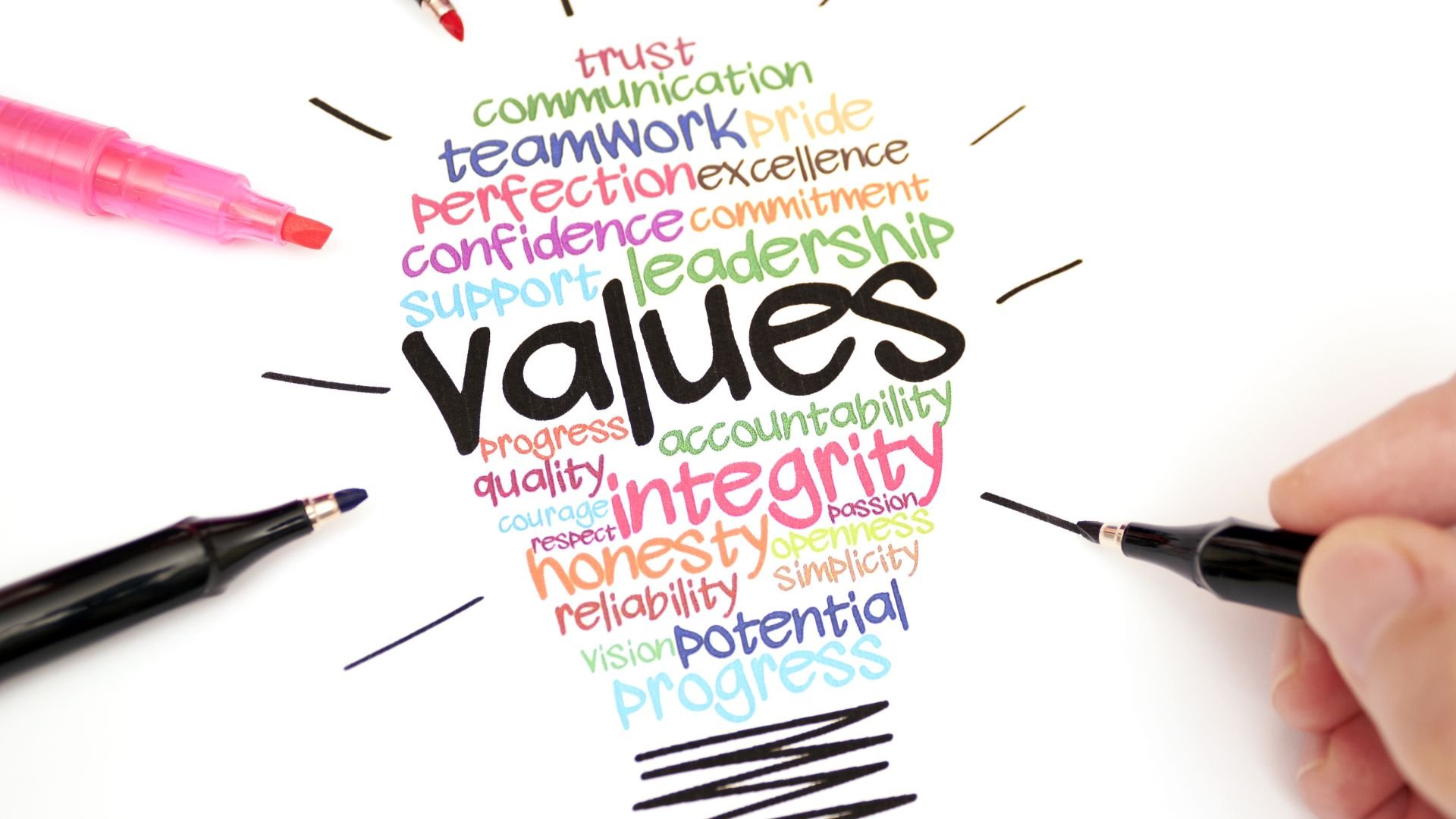
Aligning Your Values
What are Company Values?
The principles and beliefs that ground employee’s experience of your organizations’ culture and what you stand for.
What is Communication?
Communication includes how we make plans, form agreements, and deliver feedback. It is the process by which two or more people share information.
A thriving workplace is where all company members feel empowered, motivated, and have a sense of psychological safety. It is a place where the company's values are inspirational, the mission is motivating, and people are excited to work together.
Psychological safety is the experience of trust, comfort, and ease that people have with one another. When it is present colleagues are comfortable giving and receiving feedback and support each other in stressful situations.
This chapter explores the role of strong company values and clear and healthy communication. It will provide you with an introduction and some practices to see what works best for you as a leader and your team.
“The manifesto influences the way we make decisions at Holstee, how we design products, and of course the types of lives we hope to lead. It's helped us answer one of the most important questions: why?”
- Mike Radparvar, Co-Founder Holstee
How to Create Team Values
These four questions are a simple place to start when crafting your core values. They are not the only questions you should ask, and when thinking about your process it is valuable to include input from team members, investors/funders, customers, and community members.
Your Values Are For Whom?
Who is your intended audience? Create a map of the stakeholders of your organization (employees, funders, customers, suppliers, community members) and clarify who is the audience for your values. Once you know your audience invite them to participate to create the values.
What Matters to You?
Ask the participants to brainstorm 3-5 values each. What makes you excited, engaged, and motivated?
Where is There Alignment?
Share the individual lists and look for any trends? If a value is shared and named by many people it is a good candidate for your values statement.
What Makes your Values Come Alive?
There is a tendency to make statements that are exhaustive and include everything. This makes it difficult to remember. If you want your values embodied then try to make them memorable and short.
Communication as a Tool to Thrive
Healthy communication includes a few key ingredients:
- 1. Both parties are comfortable initiating a conversation
2. During the conversation, both parties share their perspectives
3. During the conversation, both parties feel connected and a shared sense of purpose and value
4. After the conversation, both parties clearly understand next steps, who is responsible, and date due.
Questions to Improve Communication
Listen and ask clarifying questions
Provide recurring times for 1:1 conversations to remove scheduling barrier
Make space for personal connection (especially in a virtual environment)
Reflect back what you’ve heard and ask if that is accurate
Provide feedback with concrete examples highlighting the action/behavior, not connecting it to a character fault or something wrong with the other person
Be consistent
Admit when you are wrong as a leader and what you will do differently
Don’t interrupt; let the other person complete their thoughts
Invite people who are quieter in meetings to contribute
Create shared agreements about when and how the team will deliver feedback
Wellbeing Ingredients
Assessing your Values
Are your company values aligned to your culture and team expectations? This practice provides guiding questions to help navigate the value creation process.
Feedback Practices
Timely and effective feedback can define your team’s culture. These practices provide different formats for delivering feedback.


